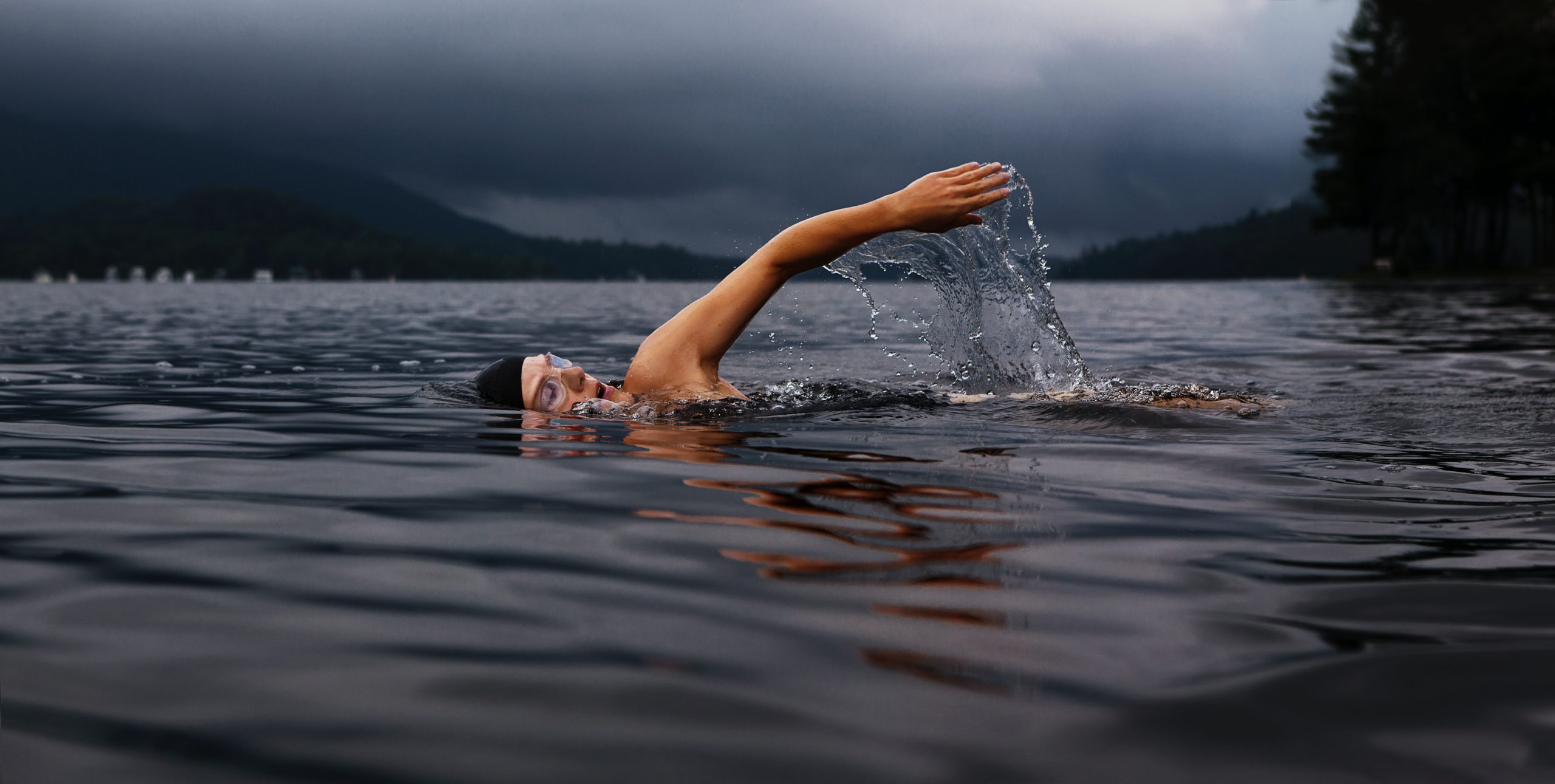Picture the scene, you are at the start line, patiently waiting to run head first into the water along with 50 or more other people in your wave start or treading water desperately trying not to tire yourself out before you start the swim ahead.
Picture the scene, you are at the start line, patiently waiting to run head first into the water along with 50 or more other people in your wave start or treading water desperately trying not to tire yourself out before you start the swim ahead.
If you are lucky it is a wetsuit swim, the wetsuit giving you some welcomed buoyancy – unless of course you are a swimmer, one of those triathletes who swam before they could walk and just look so effortless as you flail your arms through the water to make it through the distance!
Personally, I was always grateful the swim was first, out of the way and then it was happy days on the bike!
It didn’t seem to matter what coaches told me about my freestyle technique, and I had a few coaches try to help (4 to be exact) – they all said similar things but none of them made enough sense to me and once i was face down, horizontal in the water I definitely had no idea!
What is it about being that way in water that totally threw my proprioception out of whack? As a Pilates trainer with pretty good body awareness and co-ordination, it was so frustrating to find myself unable to ‘keep my elbow high’, ‘press through the water’, ‘keep your fingers facing the bottom of the pool’ – I thought I was! The coaches saw otherwise.
And what about legs – what were they meant to do again? My triathlon coach (not swim coach) used the pull buoy in most of my training sessions – heaven on earth as far as I was concerned, now I can swim! As soon as my toy was taken away from me it was as if I had 2 separate body halves. Someone asked me to count once how many leg kicks I did per stroke – I tried to count for them, I tried – I failed. My body and mind became totally disconnected and I decided to ignore the request!
I was strong enough though to get myself through the swim of most races I did in the top three and I have Pilates to thank for that.
I mainly used the Reformer to focus on my swim arms – as much as I could understand from what the coaches had said. I developed strong rotator cuff muscles, and kept myself open in the chest with GYROTONIC® method. My core strength helped to give me some lift in the water and not totally sink my legs. Planks on the Reformer definitely developed my streamlined torso so if I ever did manage to suss out the technique needed for swimming I had the internal stability and external strength for it! The Chair helped my spine stay subtle and rotate in a face down position, being able to move with control from one side to the other as if in the water. My leg kick wasn’t too bad on land – but again as soon as I hit the water and I had to coordinate I became dissociated from what my upper and lower body were doing! My legs were an issue as they are with most bikers and runners – they tended to drop in the water too much and create drag. With a strong core and glutes it helped to minimise the drag, but not as much as I needed to keep up with the lead girls.
Why did this not all come together in the water itself? Might be due to a near drowning when I was 9 leaving me a deep subconscious fear of relaxing as I swam – instead I tended to fight the water. So as calm and smooth and graceful as I might be on the Pilates equipment, it never held well enough together in the swim.
However, I never developed any swim injuries due to my total body stability and I used to swim 12km a week using hand paddles too – I developed strength to swim as opposed to form, not ideal but it worked better for me. Pilates and my knowledge of movement and the body and positioning kept me injury free.
I still swim – normally with a pull buoy and now I enjoy it more, very little focus on my 100m time, but I still have the coaches’ voices going round in my head in an attempt to help me become a swimmer.
Article written by Lisa Jones, Pilates Master Trainer and Triathlete
Image Credit: Unsplash, Todd Quackenbush

